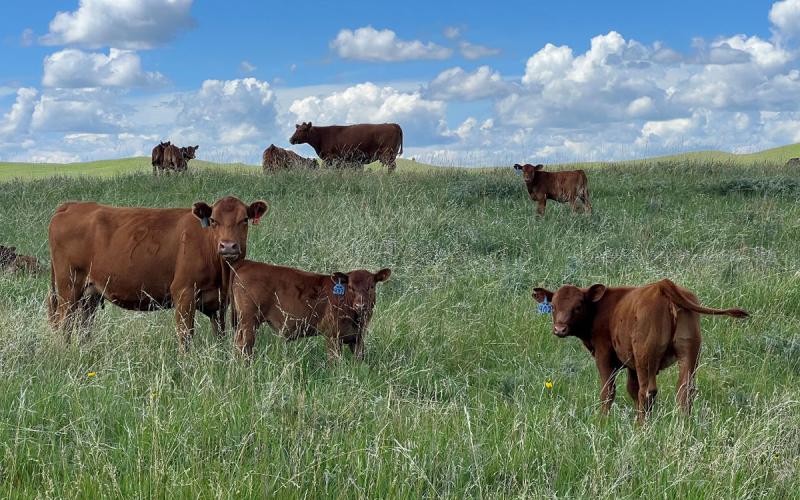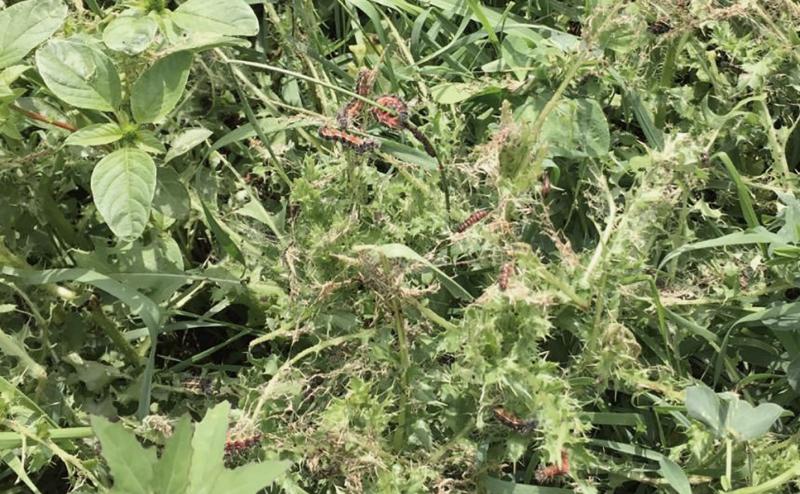
This week we received reports of caterpillars feeding on Canada thistle (Figure 1). After taking a look at the caterpillars we determined that they are thistle caterpillars. However, we typically don’t see thistle caterpillar activity in South Dakota until July or August. So why are they showing up so early this year?
Population Observations
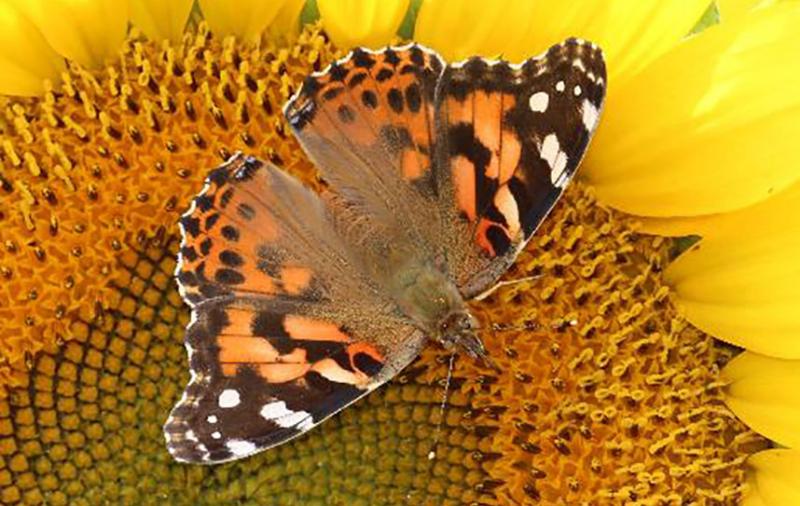
Thistle caterpillars are the immature stage of the Painted Lady butterfly (Figures 2 and 3). Painted lady butterflies overwinter in the Southern U.S. and Mexico. When conditions are favorable there, larger populations of the butterfly will be observed migrating back to the Northern U.S. and Canada. In 2019, large amounts of rainfall occurred in the deserts near the U.S.-Mexican border where the painted lady butterflies overwinter. This resulted in increased host plants being available for developing caterpillars and increased spring populations.
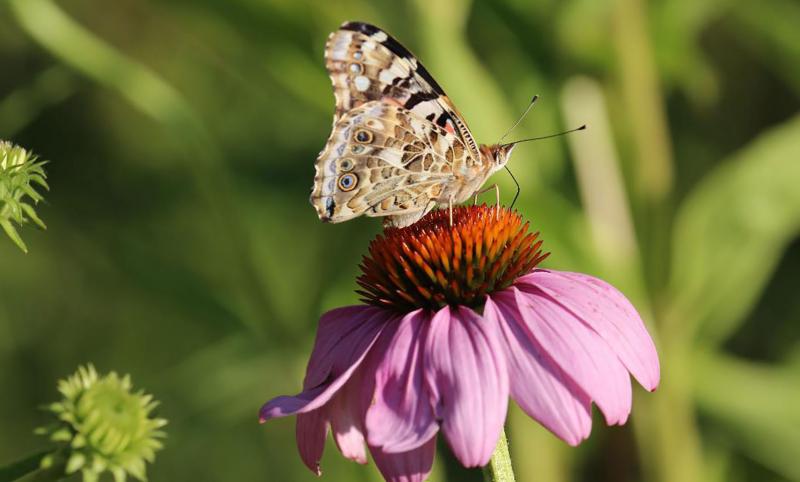
One interesting observation by researchers in California is that fewer painted lady butterflies were observed during the normal migration period, likely due to the ability to stay in the original feeding area. But the painted lady butterflies have made their way to South Dakota and we will potentially see increased populations throughout the 2019 season.
Feeding Behavior
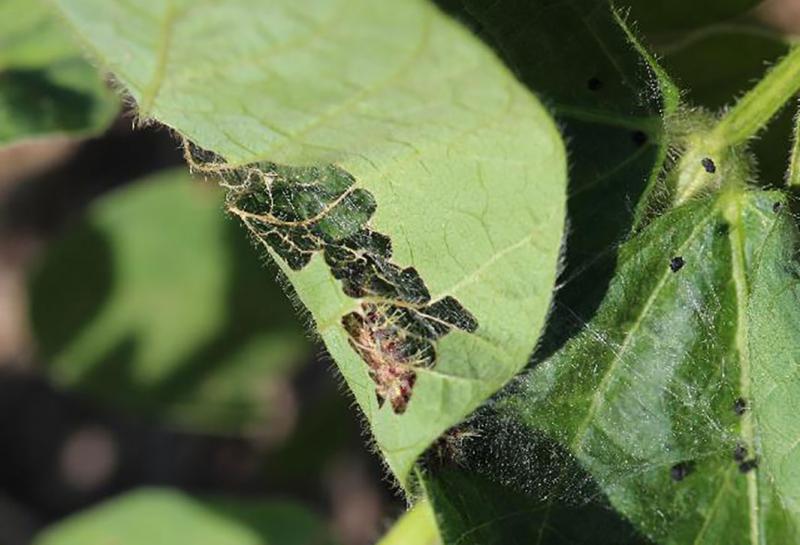
Crops and Plants
Thistle caterpillars are a polyphagous insect, which means they are capable of feeding on several different hosts. It is estimated that thistle caterpillars are capable of feeding on over 100 species of plants that include some of South Dakota’s major crops including soybean and sunflower. In addition, it may also feed on some garden plants. Its polyphagous nature causes the thistle caterpillar to often be considered a pest. However, when it is feeding on weeds such as Canada thistle it may be considered a beneficial insect. Although these caterpillars are generally not present in high numbers, they can cause severe defoliation and in the case of weed management, greatly reduce the aboveground biomass of Canada thistle. Throughout their migratory flight there are several generations of painted lady butterflies and subsequently several generations of thistle caterpillars.
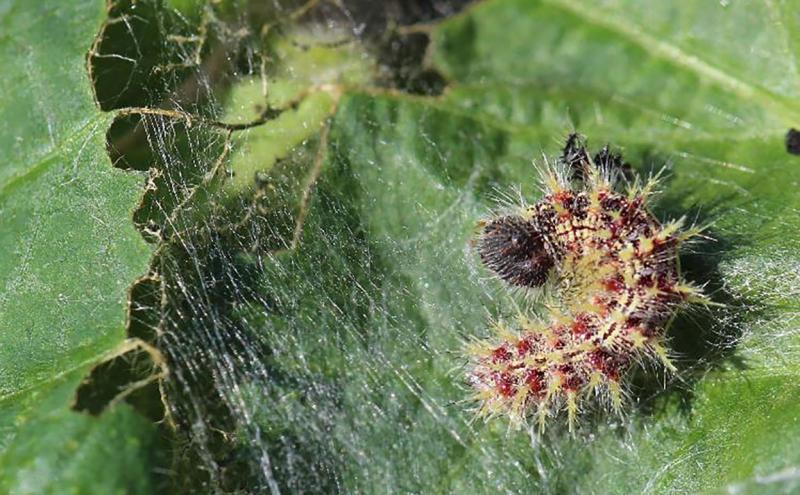
Thistles
Similar to crop hosts, the thistle caterpillars feed on thistle leaves by rolling them and using silken webbing to hold them. In Figure 1, the caterpillars can easily be observed feeding on top of the plants and not in a protective leaf covering. The caterpillars appear to have silken hideouts made on the plants but are foraging out from them. These hideouts provide shelter to the caterpillars (Figure 4). The thistle caterpillars can vary in coloration but are typically a brown or black color with a lighter colored line running the length of their bodies on each side (Figure 5).
Unfortunately, the thistle caterpillar will not remove Canada thistle from an area. This is due to the extensive horizontal root structure of Canada thistle. Although the plants may not flower and set more seeds, they will be back the following year. In addition, reports of trying to use thistle caterpillars as biocontrol agents for thistles resulted in high infestation rates of surrounding crop fields. Therefore, the thistle caterpillar is not an ideal biocontrol agent for the management of Canada thistle.

